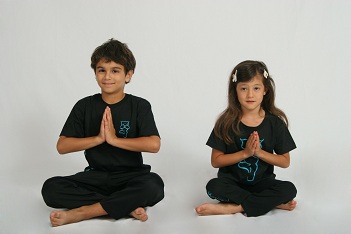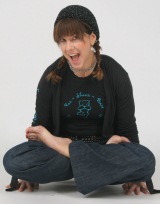Yogiños: Yoga for Youth® will provide kids programs at Wanderlust Colorado July 5-8!
The Wanderlust Wanderkind Kids Program is the number one spot on-site for kids ages 4-10 to have a safe and exceptionally cool Wanderlust experience all of their own. Custom tailored to the interests of Wanderlust families, the Wanderkind kids program, is held on-site at each festival location and runs from 9:30 am to 4 pm Friday through Sunday. All activities, like kid's yoga, music, hula-hooping, and arts and crafts, are included in the program. Kids and parents will be responsible for their own lunches, but can enjoy samples from kid-friendly snack sponsors. Tickets are $50 per day. Want more info on the daily activities? Scroll down below!

 | |||
| Tree Toss is one of the many games we play to practice balance, sharing and team-work. |
CLASS INFO:
Yogiños: Yoga for Youth® is an OHMazing™ interdisciplinary kids yoga curriculum in English, Spanish, and Sanskrit. Our yoga for kids program weaves together wellness and the 8 Limbs of yoga with original art, music, games, stories, and other mindful, sensory-integrated activities to promote flexibility, strength, balance, collaboration, civic and social responsibility, mindfulness, and nutrition on and off the yoga mat. www.yoginos.com and info@yoginos.comWe look forward to meeting you and your kids and posing, playing and learning about ourselves, others and the Earth! Each day we will weave works of art and music with activities touching on all aspects of yoga including pranayama, individual and partner yoga poses, cardiovascular and relaxation exercises.
THURSDAY, JULY 5: The Story of Ganesha
How did Ganesha become known as the elephant-headed prince? Spend the day on an adventure of self-reflection and empowerment through the story of Ganesha, a beloved Hindi elephant prince.
FRIDAY, JULY 6: The Hero in Me
It’s a bird, it’s a plane, no... it’s EACH OF US! Join us as we play and pose learning how each one of us is a hero and heroine.
 |
| Vishnu
Cambodia, Khmer culture Sandstone 1999.30 Crow Collection of Asian Art |
SATURDAY, JULY 7: Vishnu's OHMazing Journeys
Vishnu's OHMazing™ Journeys weaves together ancient narratives of the hero Vishnu and the heroine Lakshmi through yoga, art, music, and dance. We will celebrate our own journeys and the choices we make as we build relationships and extend love to ourselves, to others, and to the universe.
SUNDAY, JULY 8: Lean on Me
Learn to lean and be leaned on both on and off the mat! We will pose and play games that offer opportunities to practice communication skills in various ways. “Just call on me brother, when you need a hand, we all need somebody to lean on!” (Lean on Me lyrics by Bill Withers)




 Learning how to mindfully breathe was tough for me as an adult. My mind tugged on the rest of me to knock-this-off and return to old habits of reacting rapidly rather than responding responsibly. The key that unlocked my paths to
Learning how to mindfully breathe was tough for me as an adult. My mind tugged on the rest of me to knock-this-off and return to old habits of reacting rapidly rather than responding responsibly. The key that unlocked my paths to 




 During our
During our 


.JPG)

